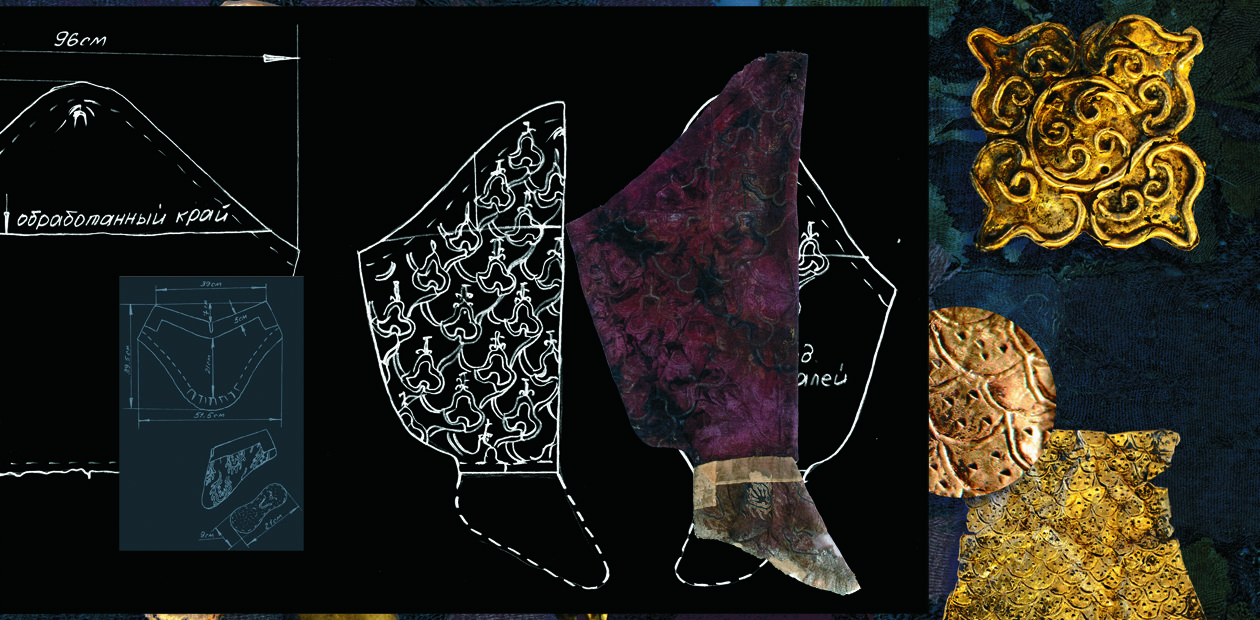Ancient Fashion: Leggings from Steppe Leader’s Wardrobe
The leggings are part of the unique finds made in 2012 by an expedition organized by researchers from Novosibirsk and Mongolia under the guidance of the famous Russian archaeologist Natalia Polosmak (Institute of Archaeology SB RAS) when they excavated a burial ground of a representative of the highest Xiongnu nobility. The Xiongnu were an ancient nomadic nation who created the world's first nomadic empire and proved to be a dangerous neighbor of the mighty Chinese Han empire.
The one whom these leggings had been sewn for had worn them long enough before heading into another world. This is evidenced by the worn-out shoe soles stitched to the pant-legs and the “napped” fabric itself, which began to resemble broadcloth. The leggings were also damaged by robbers. Apparently, they were pulled off the man's body lying in the coffin and thrown onto the carpeted floor of the wooden burial chamber, where they were found 2,000 years later.
The meticulous effort put by restorers made it possible to recreate the appearance of this clothing item. The leggings, which were made of purple fabric embroidered with silk and ended with felt boots, were likely worn over simple (nonornamented) silk or woolen pantaloons. Being a fancy item, they were worn for decoration rather than protection against dirt and cold. The dye, the plain weave, the quality of the seams and embroidery, and the shape of the patterns suggest that this textile item reflects the fashions and technological trends of three different cultures of that time.
When exploring the burial mound, the archaeologists also found remnants of beautiful Chinese silk clothes decorated with bunches of bright kingfisher feathers, a sable coat, and beads and pendants made of semiprecious stones. The presence of small gold plaques with holes is evidence that, according to the steppe tradition, the buried man's outfit was heavily embroidered with gold. This truly “barbarian” pompousness is set off by a Chinese headpiece, which served as a symbol of a high status and “civility” and was completely useless in the steppe. Today these findings could help us imagine, albeit not fully, how “fashionable” clothes of an ancient noble nomad looked like—a habitual rider’s outfit eclectically combined with Chinese robes and headpieces, which found their way to the steppe as gifts of the Han court.
As regards leggings, researchers believe that these unstitched pant legs attached to a belt mark the beginning of the evolution of pants as they trace the existence of leggings in a variety of cultures and regions. In antiquity, they were very popular with Persians and Scythians. The leggings from the Xiongnu mound are in excellent condition; hence, anyone can make an exact copy of the ancient item by using the detailed patterns; their unusual shape and exquisite ornaments could be a source of inspiration for a modern designer.
Translated by A. Kobkova








